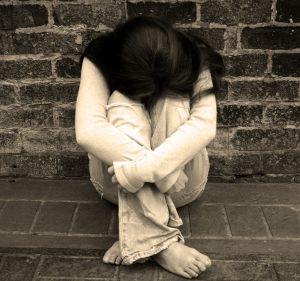 We know that bullying hurts people. We know it can have troubling and even devastating results if left unaddressed. We know thousands of students are dreading going to school today because of it. We know it’s causing so many to become clinically depressed and constantly feeling hopeless.
We know that bullying hurts people. We know it can have troubling and even devastating results if left unaddressed. We know thousands of students are dreading going to school today because of it. We know it’s causing so many to become clinically depressed and constantly feeling hopeless.
Alright, so enough talk. We understand it’s a problem and know what it can do to people. For results-oriented people, you are probably wondering how to fix the problem. How do we actually stop bullying? Can it even be stopped at all?
Human beings have free will. We cannot control what a person thinks or does. In this respect, no, we cannot completely stop bullying. However, we can drastically reduce it.
The National Education Association (NEA) provides some simple steps that we can take to lessen the likelihood of bullying behavior.
Pay attention.
Look for the warning signs of bullying, like mysterious injuries, lost/destroyed belongings, changes in eating habits, and avoidance behavior. Not every person will show warning signs, however. In fact, many will diligently try to hide them. Try to engage with students every day and ask open-ended questions to which they can’t just answer “yes” or “no”. Get them to talk by encouraging a conversation.
Be proactive.
Don’t ignore anything, even if it looks like seemingly harmless teasing. People react to things in their own different ways. What would be harmless teasing to one student could be hurtful to another. Never brush these situations off or think that “kids will be kids”. Always let student(s) know you are there for them and can help.
Stay (and remain) calm.
If you ever need to intervene, avoid arguing with any of the students. Be an example of respectfulness and composure. Make sure everyone is safe first, and check for any injuries that might have been inflicted before you stepped in. Call for medical help if anyone is hurt. Reassure all parties that everything is going to be alright, and politely instruct bystanders to leave.
Address students individually.
Don’t try to figure out the facts while everyone is present. Talk to each student alone (including bystanders) about what happened, or what’s been happening. Don’t give them an opportunity to talk to each other. That way, everyone will be able to share their own sides of the story without worrying about what anyone else thinks, says or does.
Don’t rush resolutions.
Explain to the students that these situations are taken very seriously and must be resolved according to the anti-bullying policy. This helps everyone feel confident that someone is listening and wants to be fair about the outcome.
Hold bystanders accountable.
Bystanders give bullies an audience and often encourage bullying behavior. Explain to bystanders that this type of behavior is wrong and won’t be tolerated. Just because they weren’t the ones directly performing the act of bullying doesn’t mean they are not accountable for the incident. They are expected to attempt to stop bullying when they see it. Let them know you can be trusted to talk to if they witness someone being bullied.
Listen and don’t pre-judge.
Sometimes the alleged bully may actually be the victim. They could just be retaliating or defending themselves. It could also be the result of a medical or psychological disorder. So, it’s best to avoid making any assumptions. Listen to each student’s anecdote with an open mind.
Refer professional help when necessary.
Do not give any advice that is beyond your level of expertise. If you think there may be an underlying issue, refer the student to a counselor, nurse, psychologist, social worker, or other professional.
Get some training.
If you work with students of any age, in any capacity, consider receiving some training on proper bullying incident handling. Visit www.nea.org/bullyfree for information and resources.

1 comment for “For Teachers: How to STOP bullying”